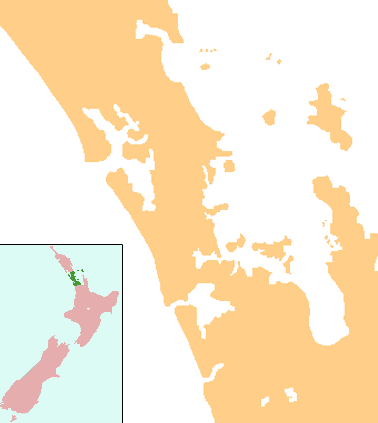Glen Innes, New Zealand
| Glen Innes | |
|---|---|
 Glen Innes | |
| Basic information | |
| Local authority | Auckland Council |
| Electoral ward | Maungakiekie-Tamaki |
| Local board | Maungakiekie-Tamaki |
| Board subdivision | Tamaki |
| Coordinates | 36°52′34″S 174°51′41″E / 36.8762°S 174.8615°ECoordinates: 36°52′34″S 174°51′41″E / 36.8762°S 174.8615°E |
| Facilities | |
| Train station(s) | Glen Innes Railway Station |
| Surrounds | |
| North | Saint Heliers |
| Northeast | Glendowie |
| East | Wai o Taiki Bay |
| Southeast | Tamaki River |
| South | Point England |
| West | Saint Johns |
| Northwest | Kohimarama |
Glen Innes is a suburb of Auckland, New Zealand, located nine kilometres to the east of the city centre, close to the waters of the Tamaki River estuary.
Glen Innes gets its name from a large farm owned by William Innes Taylor that was here. There were four Taylor brothers in Auckland, the sons of a British man who had had a military career in India. Three of the brothers had farms in this area and built houses; William Innes Taylor at Glen Innes, Richard James Taylor at Glendowie and Charles John Taylor at Glen Orchard (now Saint Heliers). Their brother Allen Kerr Taylor had a farm estate in Mount Albert, whose house was called Alberton.
The main streets in Glen Innes are Line Road, Taniwha Street and Apirana Avenue, which meet in the city centre. Glen Innes has a train station on the Eastern Line of the Auckland Rail Network, and is a hub for eastern Auckland isthmus buses (Metrolink).
Glen Innes has for the most part been a low-income, working class area with around 1,500 state houses. In an effort to improve the quality of state housing in Glen Innes, the Government introduced "Talbot Park", an area of higher density housing, consisting of mostly apartment-style places.
Redevelopment conflict
There have been protests in Glen Innes over proposals to redevelop existing state-owned housing.[1] Housing New Zealand plans to replace houses on large sections with more "intensive development," including many conversions to privately owned and sold housing with profits going to developers such as property mogul, Murdoch Dryden. This involves removing tenants from properties some have lived in for long periods. There has been a number of reported deaths of elderly tenants from during the relocation process. Many protests have resulted in arrests of demonstrators, including Mana Party MP Hone Harawira on one occasion, as well as a number of reported police brutality cases.[2] Housing New Zealand argues that the development will "make better use of land" and enable the provision of higher quality homes to their tenants, however community members argue it is a gentrification process which is tearing apart their community.[3]
References
- ↑ "State housing tenants march on Parliament". 3 News. 7 November 2012. Retrieved 8 January 2014.
- ↑ "State house redevelopment protests criticised". 12 October 2012. Retrieved 8 January 2014.
- ↑ "Northern Glen Innes redevelopment to provide homes to those in need". August 2013. Retrieved 8 January 2014.
- Delving Into The Past Of Auckland's Eastern Suburbs; section 6, St Heliers Bay. Elizabeth T. Jackson. Premier Print Services 1976.
External links
- Photographs of Glen Innes held in Auckland Libraries' heritage collections.